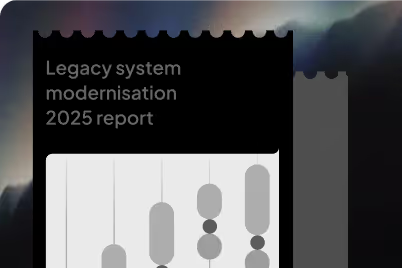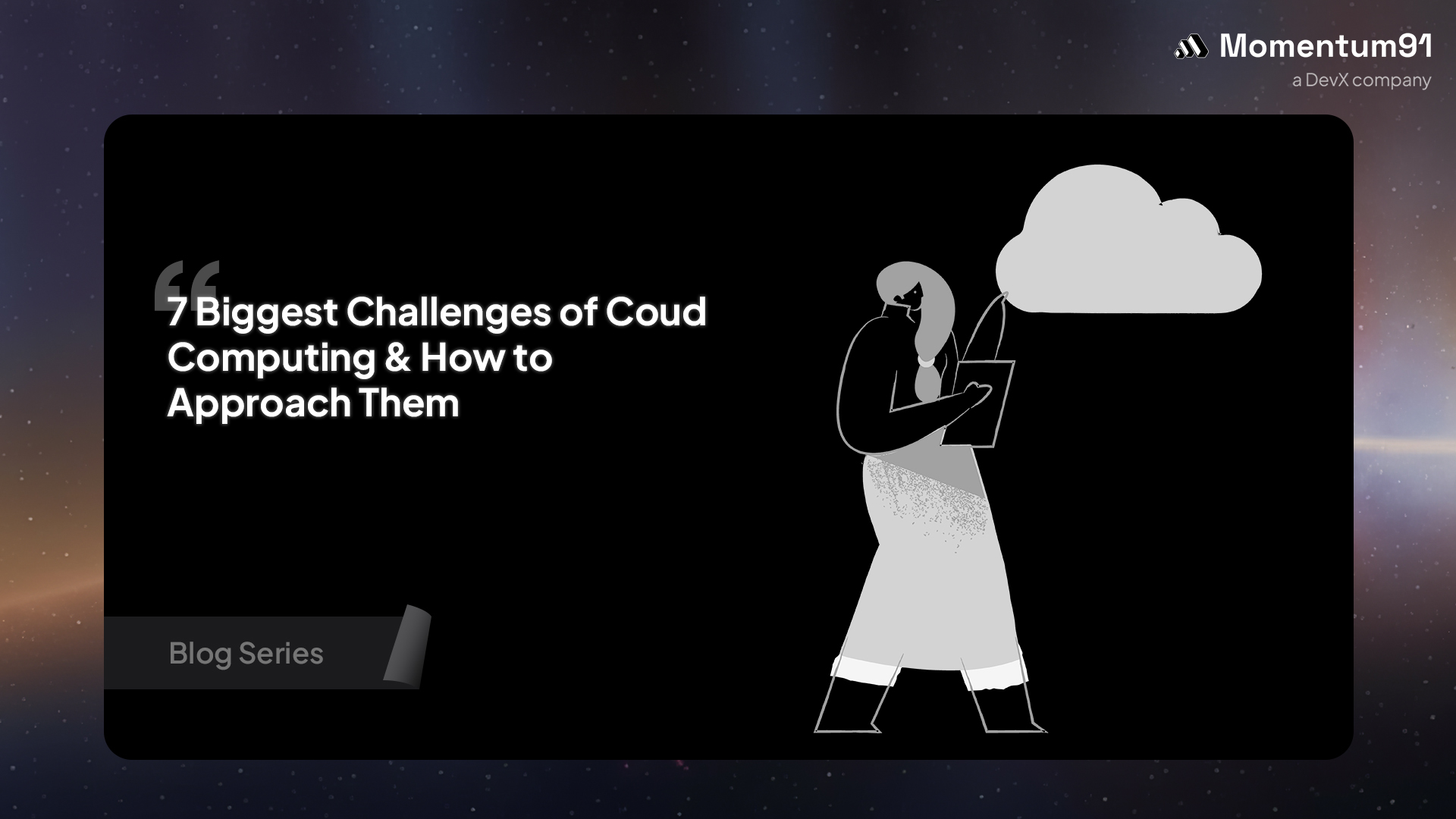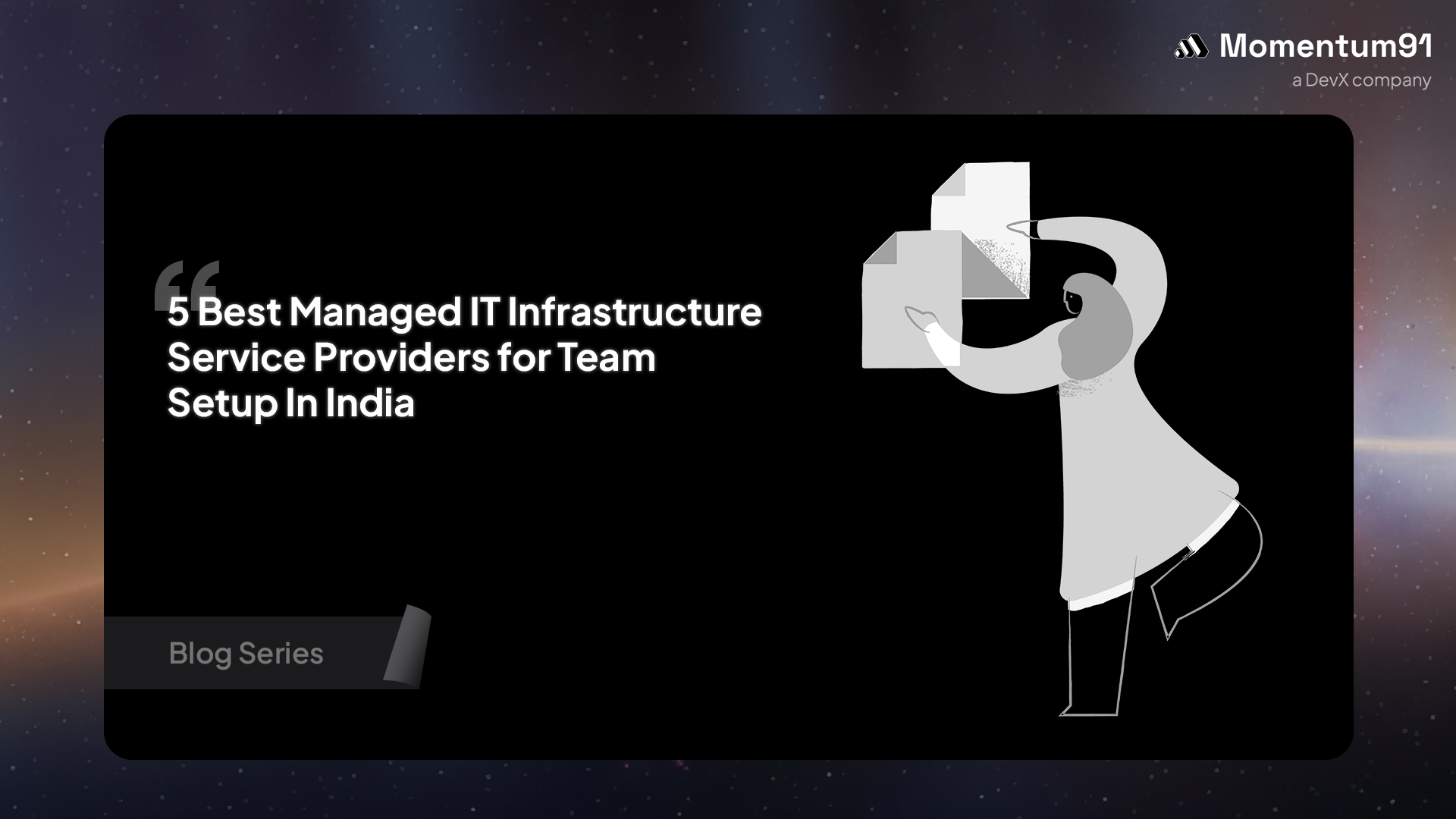Understanding Offshore Software Development Pricing Models

The global IT services outsourcing market size was estimated at USD 744,623.5 million in 2024 and is expected to reach USD 1,219.31 billion by 2030, growing at a CAGR of 8.6% from 2025 to 2030.
Smart companies use fixed price offshore contracts, time and materials pricing, and dedicated team pricing structures to maximize cost savings offshore. Pricing models offshore development teams offer vary from traditional approaches to value-based pricing offshore methods.
Recent market analysis shows offshore development contracts deliver 40-60% savings compared to in-house teams. Development cost estimation and project budgeting offshore directly impact your ROI calculations.
Quality offshore vendor selection requires understanding regional pricing differences and hidden costs offshore. At Momentum91, we optimize offshore software development pricing models for maximum business value.
Core Offshore Software Development Pricing Models
Offshore software development pricing models in 2025 offer four primary approaches that reshape how businesses manage development cost estimation:
- Fixed price offshore contracts provide complete budget predictability with predetermined costs for well-defined project scopes. This model works perfectly for startups requiring clear project budgeting offshore parameters.
- Time and materials pricing delivers maximum flexibility, billing based on actual hours worked and resources consumed. This approach suits complex enterprise projects with evolving specifications.
- Dedicated team pricing establishes monthly rates for exclusive developer access, making it optimal for long-term projects requiring consistent collaboration and cost savings offshore.
- Value based pricing offshore ties costs directly to business outcomes and ROI offshore development metrics. Studies show pricing models offshore development using value-based approaches increase client satisfaction rates by 20-25%.
Each model addresses different project characteristics, risk tolerance levels, and business objectives. Understanding these core models sets the foundation for exploring their specific benefits and limitations.
A) Fixed Price Model Benefits and Limitations
Fixed price offshore contracts deliver complete budget predictability, making financial planning straightforward for businesses. This model transfers project risk to the development partner, ensuring predetermined deliverables within agreed timelines. However, scope changes can trigger expensive renegotiations, potentially increasing overall cost savings offshore by 20-30%.
Fixed price offshore works best for well-defined projects with stable requirements, making it popular among startups and small businesses with limited budgets. Market data shows only 17% of companies reduced rates in 2025, indicating businesses focus more on value based pricing offshore delivery.
This model provides excellent cost control but requires detailed upfront planning to prevent scope creep.
B) Time and Materials Flexibility Advantages
Time and materials pricing offers unmatched project flexibility with key benefits:
- Seamless adaptation to changing requirements without offshore development contracts renegotiations.
- Transparency through detailed time tracking and progress reporting systems.
- 30% better milestone completion rates for agile projects using this approach.
- Perfect fit for complex enterprise projects with evolving specifications.
However, costs can escalate without proper management, requiring strong project budgeting offshore oversight. The $20-$29/hour range experienced the highest growth in 2025, suggesting growing demand for affordable development cost estimation among SMBs.
This approach balances flexibility with cost control, leading us to examine regional pricing variations.
Regional Pricing Variations in Offshore Development Models
Offshore software development pricing models vary significantly across global regions, impacting overall project costs and value proposition. Regional pricing differences affect all pricing models offshore development companies employ, requiring careful consideration of total cost ownership beyond base rates.
Specialized skills like AI/ML and blockchain development command premium rates globally, increasing development cost estimation by 30-50% above standard rates. These regional pricing differences directly influence your offshore vendor selection strategy and budget planning.
Understanding these variations helps optimize your approach to emerging hybrid and value-based pricing models.
A) Asia-Pacific Cost Advantages
Asia-Pacific regions, particularly India, Vietnam, and the Philippines, offer the most competitive offshore software development pricing models. Indian developers provide deep talent pools with strong English communication, while Vietnam targets entering the top 10 global software outsourcing suppliers with one million IT workers.
Vietnamese markets offer typical offshore development contracts at $20-50 rates. These markets excel in fixed price offshore projects and dedicated team pricing arrangements, providing excellent value while maintaining high technical standards.
This cost leadership position makes Asia-Pacific ideal for budget-conscious projects, setting the stage for European alternatives.
B) European Quality-Cost Balance
Eastern European countries like Ukraine, Poland, and Romania provide optimal quality-cost balance in offshore software development pricing models. Ukraine stands out with its education system producing 36,000 IT workers yearly, offering rates of $30-50 per hour.
Poland's offshore development contracts range $40-55 but deliver excellent technical education standards. With over one million software developers and 4,526 highly-rated companies, Eastern Europe excels in complex enterprise projects requiring sophisticated pricing models and offshore development approaches.
This regional expertise in quality delivery leads us to explore emerging innovative pricing approaches.
Emerging Hybrid and Value-Based Pricing Models
The 2025 offshore software development pricing models introduce innovative hybrid pricing models and value-based approaches that address traditional model limitations. These modern solutions bridge the gap between cost control and project flexibility:
- Hybrid pricing models combine multiple approaches, starting with time and materials pricing during discovery phases before transitioning to fixed price offshore for defined components.
- Companies report 15% better project outcomes using staged hybrid approaches that reduce risk while maintaining flexibility.
- Value based pricing offshore aligns development costs with business outcomes, charging based on revenue generated or efficiency gained.
- Studies indicate offshore development contracts using value-based approaches increase client satisfaction rates by 20-25%.
Organizations increasingly combine offshore and nearshore teams for dynamic hybrid models. Wipro's global approach to integrating local and remote developers led to 28% YoY revenue growth through optimized cost savings offshore. These innovative approaches require strategic implementation for maximum effectiveness.
A) Hybrid Model Implementation Strategies
Successful hybrid pricing models implementation requires careful phase planning and clear transition criteria:
- Begin with time and materials pricing for requirements analysis and prototyping phases
- Shift to fixed price offshore contracts for production development stages
- Project velocity increased 40% with 24/7 development cycles across time zones
- E-commerce platforms cut feature development costs from $250K to $95K per quarter using hybrid teams
This approach reduces uncertainty while maintaining cost control, particularly effective for complex projects requiring initial exploration. Understanding implementation strategies leads us to examine value based pricing offshore success factors.
B) Value-Based Pricing Success Factors
Value based pricing offshore success depends on clearly defined success metrics and measurable business outcomes:
- Clients and offshore teams must agree on specific KPIs, revenue targets, or efficiency improvements before project initiation
- Studies show software spending generates $2.78 in 3 years for every $1.00 invested with 41% annualized ROI offshore development
- This model works best when development directly impacts quantifiable business results
- Advanced financial metrics like Net Present Value and Internal Rate of Return are essential for accurate development cost estimation
This approach creates shared success incentives between all parties involved in the project.
Proper implementation of these pricing models requires strategic cost optimization techniques.
Cost Optimization Strategies for Offshore Development Pricing

Effective cost optimization in offshore software development pricing models requires strategic planning beyond simple rate comparison. Companies achieve optimal ROI offshore development by focusing on total cost ownership, including hidden costs offshore like communication overhead and quality assurance:
- Smart organizations prioritize feature prioritization and MVP development approaches, reducing initial scope while maintaining core functionality
- Dedicated team pricing typically provides better long-term value despite higher monthly commitments, offering consistent quality and reduced onboarding costs
- Risk mitigation strategies, including proper communication protocols and quality management, add only 10-15% to total costs while preventing expensive rework
- Investing 10% of custom software development cost estimation in UX research prevents expensive redesign cycles and improves user adoption rates
As AI tools improve developer productivity, expect software cost savings offshore to decrease 15-25% over the next three years through automation. Understanding these optimization strategies helps identify and manage hidden expenses effectively.
A) Hidden Cost Identification and Management
Hidden costs offshore can increase project expenses by 20-30% beyond initial estimates. Common expenses include communication barriers ($500/developer for training), onboarding inefficiencies, quality rework, and additional management overhead.
Communication tools, project budgeting offshore software, and timezone coordination add 15-20% to base costs. Comprehensive testing practices prevent expensive post-launch bugs and security vulnerabilities, reducing long-term maintenance costs.
Proactive identification and budgeting for these factors prevents cost overruns and ensures accurate development cost estimation. Proper hidden cost management sets the foundation for building successful long-term partnerships.
B) Long-term Partnership Benefits
Long-term offshore development contracts reduce costs over time through improved efficiency and reduced onboarding expenses.
Strategic offshore vendor selection builds lasting relationships:
- Companies maintaining client relationships through consistent service quality report 75.3% experienced unaffected or improved relationships despite minor rate adjustments
- Established scalable pricing structures minimize communication barriers, leading to faster development cycles and higher quality deliverables
- Multi-year offshore software development pricing models secure better rates and priority access to top talent
- Only 13.9% experienced churn due to pricing models offshore development changes, indicating trust matters more than slight rate adjustments
This partnership approach transforms transactional relationships into strategic collaborations focused on ROI offshore development. These optimization strategies and partnership benefits directly support Momentum91's comprehensive service approach.
How Momentum91 Can Help Optimize Your Offshore Development Pricing
Momentum91 brings together deep AI, development, and design expertise to help you scale offshore software development pricing models quickly and efficiently. With 8 years of experience, a global infrastructure spanning 25 centres and 11 cities, and a talent pool of 13,000+ people, we deliver embedded, full-stack teams that feel like your own.
We move fast, with 95% of offshore development contracts teams going live in under ten weeks, and we cover everything from project budgeting offshore PoC development to software roll-outs and UX strategy.
Key Strengths:
- AI-First Thinking: Innovation begins with thoughtful hybrid pricing models integration and cost savings offshore optimization
- End-to-End Development: From concept to delivery, Momentum91 covers all phases of offshore software development pricing models implementation
- Full-Stack Execution: Engineers, designers, and product minds all embedded in your value based pricing offshore vision
- Embedded Product Teams: Pricing models offshore development teams work as if they're onsite with complete transparency
- Scalable Talent: Rapid team building powered by strategic offshore vendor selection and reliable partner networks
Explore how Momentum91 transforms development cost estimation ideas into impactful, scalable products.
Conclusion
Selecting the wrong offshore software development pricing models creates serious business challenges. Companies struggle with hidden costs offshore that balloon budgets by 30%, poor offshore vendor selection leading to project failures, and inadequate project budgeting offshore causing timeline delays. These mistakes result in wasted investments, damaged stakeholder relationships, and competitive disadvantages that can set your business back months or years.
Pricing models offshore development decisions directly impact your bottom line and market position. Without proper development cost estimation and strategic planning, projects fail to deliver expected ROI offshore development returns. Poor scalable pricing structures choices limit growth potential and create long-term financial strain.
Momentum91 eliminates these risks through proven offshore software development pricing models expertise. Our strategic approach to cost savings offshore and value based pricing offshore ensures your projects succeed while maximizing returns and minimizing risks.
Connect with Momentum91 today and start building cost-effective, high-quality solutions that drive real results.
FAQs
1. What is the most cost-effective offshore software development pricing model?
The most cost-effective offshore software development pricing models depend on your project specifics. Fixed price offshore works best for small, well-defined projects, while time and materials pricing suits complex, evolving requirements. Dedicated team pricing provides long-term cost savings offshore for ongoing development needs with 40% better project velocity.
2. How do regional differences affect offshore development pricing models?
Regional pricing differences significantly impact all pricing models offshore development teams offer. Asian markets provide the lowest rates ($18-60/hour), Eastern Europe delivers quality-cost balance ($35-80/hour), while Latin America offers nearshore advantages ($30-70/hour) with better time zone alignment. Smart offshore vendor selection considers total value, not just rates.
3. What hidden costs should I consider in offshore development pricing?
Hidden costs offshore include communication overhead (15-20% of project budgeting offshore), onboarding delays, quality assurance rework, project management fees, and infrastructure expenses. Development cost estimation should budget an additional 20-30% for these factors. Proper planning prevents cost overruns and ensures accurate scalable pricing structures implementation.
4. When should I choose value-based pricing for offshore development?
Value based pricing offshore works best when development directly impacts measurable business outcomes like revenue generation, cost reduction, or efficiency improvements. Both parties must agree on specific KPIs and success metrics before project initiation. This approach delivers superior ROI offshore development with 20-25% higher client satisfaction rates than traditional models.
5. How can I optimize costs while maintaining quality in offshore development?
Focus on total cost ownership rather than hourly rates in offshore development contracts. Invest in proper project planning, clear communication protocols, and long-term partnerships. Consider hybrid pricing models that balance flexibility with cost control for optimal results. Strategic offshore vendor selection and MVP approaches maximize cost savings offshore effectiveness.
6. What factors determine the success of hybrid pricing models?
Hybrid pricing models success depends on clear phase definitions, agreed transition criteria, and strong project management. Start with time and materials pricing for discovery, then transition to fixed price offshore for development. This approach increases project velocity by 40% while maintaining budget control and development cost estimation accuracy.
The inbox update you’ll never want to skip
A quick catch-up with ideas, wins, and tips worth stealing, straight to your inbox every week.
The easiest way to reach us.
Share your details and we’ll get back within 24 hours.
Blogs
A plethora of insights,all in one place
From strategy to execution. All the big ideas, practical guides & fresh perspectives that’ll help you scale with confidence
Ebooks
Comprehensive guides that break down the shifts in business and technology, Helping you lead with clarity.

Office Hours
Your direct line to our experts. Practical advice for scaling, right when you need it.

Reports
Data-backed perspectives on where industries are headed, giving you the foresight to make bolder moves.

Newsletter
A quick catch-up with ideas, wins, and tips worth stealing, straight to your inbox every week.
.avif)
Podcasts
Conversations where you get to know everything from the ones who know it best.
.avif)
Your Offshore Development Center, Done Right
Access top-tier global talent, enterprise infrastructure, and complete regulatory compliance through our proven model.
Start Now







.jpg)
